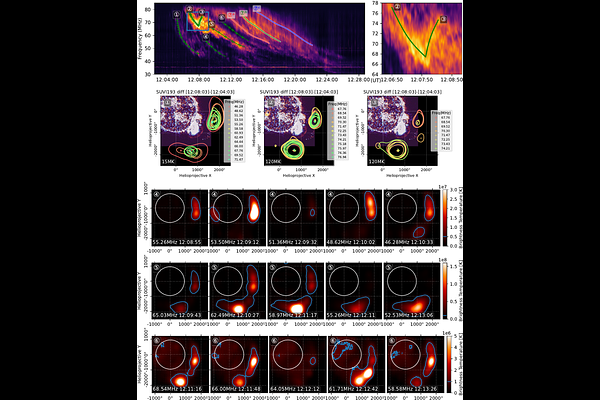Source location and evolution of a multi-lane type II radio burst

Source location and evolution of a multi-lane type II radio burst
P. Zucca, P. Zhang, K. Kozarev, M. Nedal, M. Mancini, A. Kumari, D. E. Morosan, B. Dabrowski, P. T. Gallagher, A. Krankowski, C. Vocks
AbstractShocks in the solar corona can accelerate electrons that in turn generate radio emission known as type II radio bursts. The characteristics and morphology of these radio bursts in the dynamic spectrum reflect the evolution of the shock itself, together with the properties of the local corona where it propagates. In this work, we study the evolution of a complex type II radio burst showing a multi-lane structure, to find the locations where the radio emission is produced and relate them to the properties of the local environment. Using radio imaging, we track separately each lane composing the type II burst and relate the position of the emission to the properties of the ambient medium such as density, Alfven speed, and magnetic field. We show that the radio burst morphology in the dynamic spectrum changes with time and it is related to the complexity of the local environment. The initial stage of the radio emission show a single lane in the spectrum, while the latter stages of the radio signature evolve in a multi-lane scenario. The radio imaging reveals how the initial stage of the radio emission separates with time into different locations along the shock front as the density and orientation of the magnetic field change along the shock propagation. At the time where the spectrum shows a multi-lane shape, we found a clear separation of the imaged radio sources. By combining radio imaging with the properties of the local corona, we described the evolution of a type II radio burst and, for the first time, identified three distinct radio emission regions above the CME front. Two regions were located at the flanks, producing earlier radio emission than the central position, in accordance with the complexity of density and Alfven speed values in the regions where radio emission is generated. This unprecedented observation provides new insights into the nature of multi-lane type II bursts.